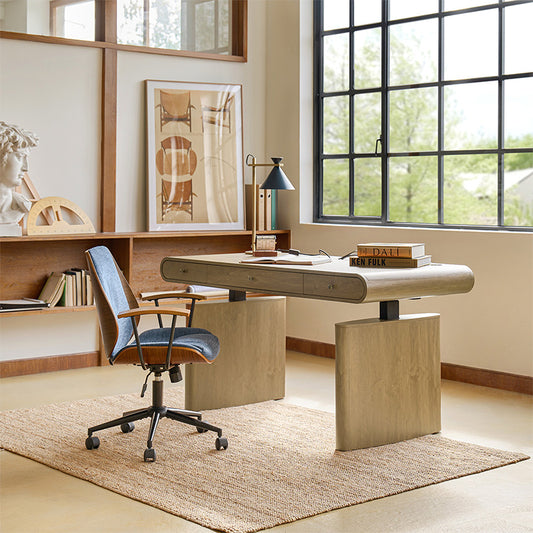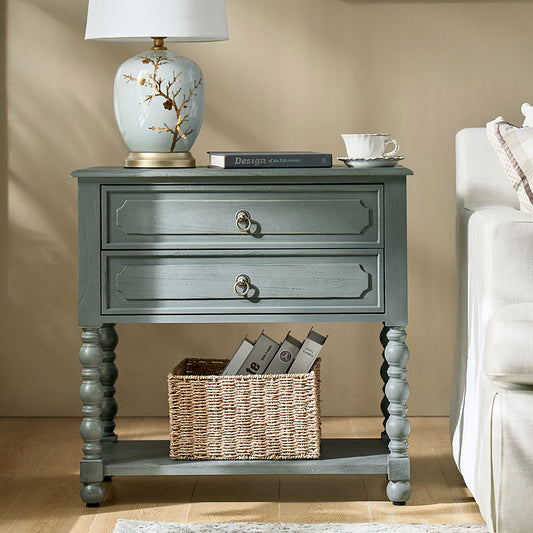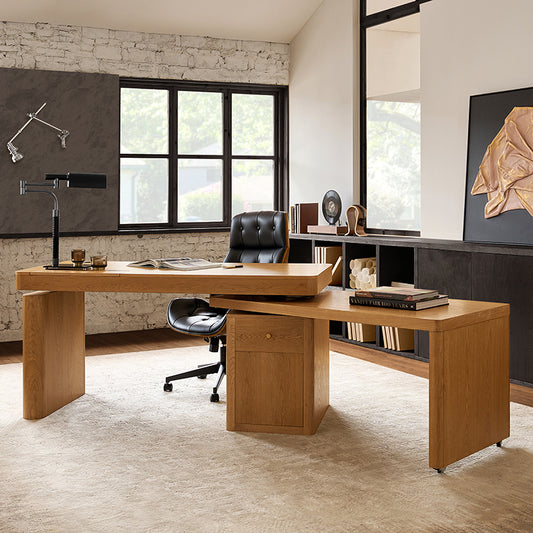How Much Does a Good Sofa Cost?

A high-quality sofa is more than just a piece of furniture; it's a long-term investment. Picture relaxing after work on a spacious, comfortable sofa while watching TV, or gathering with friends and family during the holidays in your living room. A comfortable sofa can significantly improve your quality of life, especially for those who enjoy staying at home. However, before purchasing a new sofa, price is often the first consideration for most consumers. So, how much does a good sofa really cost?
Key Factors Affecting Sofa Prices
1. Material Costs
Frame Material: The materials for sofa frames are diverse, commonly including solid wood, plywood, and metal. There are significant differences in price and quality among these materials.
For example, solid-wood frames are highly regarded for their excellent durability, but they usually come with a higher cost. North American black walnut, for instance, is hard in texture, has beautiful grains, and strong stability. It is often used in high-end sofa frames, endowing the sofa with a noble temperament and outstanding durability, but its price is relatively high.
Plywood frames, on the other hand, have a relatively lower cost. Although they are slightly inferior in strength, they are still a common choice for consumers seeking cost-effectiveness.
In addition, metal frames, such as those made of stainless steel, have excellent load-bearing capacity and a modern-looking appearance, and are often used in the design of some minimalist-style sofas.
Filling: The density and resilience of sofa filling materials play a decisive role in cost. Cushions filled with high-density foam or down, although relatively expensive, can bring users more excellent comfort and durability.
Take high-density foam as an example. It can effectively support the body weight and is not easy to deform after long-term use, providing users with a lasting comfortable experience.
Downfilling, with its soft and fluffy texture, gives users a cloud-like comfort. However, it has a higher cost and requires special maintenance.
Upholstery: The price of upholstery varies greatly depending on the material, from genuine leather, faux leather, premium fabrics to basic cloth.
For example, imported leather is popular for its texture and durability but comes at a high price. Some luxury sofas are made of hand-woven fabrics, each with a unique pattern and color combination. Due to the hand-woven process, no two pieces are exactly the same, endowing the sofa with an artistic touch.
There is also a high-tech nano-fat fabric that is not only waterproof and stain-resistant but can also automatically adjust the surface temperature and humidity by sensing the human body temperature, bringing an unprecedented comfort experience.
Hulala Home Modern Leather Sofa
2. Craftsmanship
Production Process: Handmade sofas usually require more labor and thus have higher costs.
For example, an Italian old craftsman who inherits the family craftsmanship may spend several months making a single sofa. Starting from carefully selecting wood from specific years and regions, after special drying treatment, he carves the patterns on the frame by hand. The cushions are sewn by hand using a unique stitching method to ensure firmness and elasticity. Every step is filled with his efforts, making the sofa a unique work of art.
In contrast, mass-produced sofas have lower unit costs but may lack the fine craftsmanship of handmade ones. For example, IKEA's sofas use advanced automated equipment to quickly and accurately cut and assemble components, achieving efficient production to meet the needs of the general public.
Attention to Detail: Details such as stitching, cushion shaping, and finishes can significantly influence the final price of the sofa.
Take the leather sofas of Hermès as an example. Craftsmen use a double-needle stitching technique, with the spacing of each needle accurate to the millimeter. The neat and even stitches not only enhance durability but also demonstrate a high-level craftsmanship.
Another example is the sofas of Natuzzi. They pay great attention to the corner treatment. The leather corners are specially polished and edged to be smooth and round, neither scratching clothes nor providing a delicate and comfortable touch. The corners of the backrest and armrests are carefully designed with curves and filled to be more ergonomic, improving the user experience.
Customization: High-end, custom-made sofas that involve personalized dimensions, materials, and colors take longer to produce and are generally more expensive.
For example, a consumer who wants to match the retro-style villa at home customized a sofa based on the Louis XV style of the Palace of Versailles from a professional brand. The designer redesigned the sofa according to the actual size and color of the villa and the special requirements of the customer.
For example, Swarovski crystals were inlaid on the armrests, and the backrest was made of retro silk fabric embroidered with patterns echoing the murals in the villa, making the sofa the focus of the space.
Hulala Home Fabric Sofas
3. Design and Brand Premium
Design Complexity: Original designs or ergonomically crafted sofas typically involve more design research and development costs.
For example, a sofa that won the Red Dot Design Award was inspired by the traditional Chinese folding fan. The backrest of the sofa can be opened and closed like a folding fan. Users can adjust the angle and shape of the backrest according to their needs.
It can be fully opened as a leisure recliner or partially folded to provide a comfortable sitting support, cleverly integrating traditional culture with modern design concepts.
Brand Premium: Luxury brands often add a significant markup due to their high-end image, even if their production costs are similar to less expensive brands.
The price of a sofa depends on its materials, structure, craftsmanship, and special features. When you consider these factors in relation to your budget and preferences, you're not just selecting a piece of furniture; you're investing in the comfort and style of your home for years to come.
Hulala Home Leather Sofa
Characteristics of Sofas at Different Price Points
Budget Range ($300 - $800)
Materials: Often made from synthetic fabrics, low-density foam, or inexpensive upholstery materials. The frame is typically plywood or low-quality wood, and some models may have metal frames.
Comfort: Generally lower comfort levels with insufficient foam support, and less rebound, making them less comfortable and durable than mid- to high-end models.
Design: Simple designs focused on practicality, with fewer style options.
Durability: Less durable, prone to quicker wear and tear. Best suited for temporary use or those on a tight budget.
Target Audience: Renters, students, or those looking for a budget-friendly option.
Pros: Affordable, good value for temporary use.
Cons: Limited comfort and durability, often needing replacement within 2-5 years.
Mid-Range ($800 - $2,000)
Materials: Higher-quality fabrics such as cotton-linen blends, synthetic leather, or microfiber, with medium-density foam filling, offering better comfort and support. The frame is often solid wood or high-strength plywood, with some brands reinforcing it with metal.
Comfort: Better comfort due to higher-quality foam and stronger frames, making these sofas more durable and comfortable.
Design: A wider range of designs and colors, from modern minimalist to more traditional styles.
Durability: Generally durable and suitable for long-term use in most households.
Target Audience: Middle-class families, consumers looking for a balance of cost and comfort.
Pros: Improved comfort and durability, with a lifespan of 5-10 years.
Cons: Higher cost than budget models, but still with some limitations like fewer premium material options.
High-End Range ($2,000 - $5,000)
Materials: Premium fabrics like genuine leather, wool blends, high-density foam, or memory foam. The frame is typically made from high-quality solid wood such as oak or walnut, with some models using reinforced metal or other durable materials.
Comfort: Exceptional comfort with superior support and resilience, ensuring a comfortable sitting experience that lasts for years.
Design: Unique, high-end designs, often crafted by renowned designers, with a wide variety of styles and colors to match luxury tastes.
Durability: Very high durability, built to last for decades with proper care.
Target Audience: High-income households, individuals seeking a luxurious, long-lasting sofa.
Pros: Excellent comfort, durability, and aesthetic appeal, with a lifespan of 10 years or more.
Cons: High cost, requires a larger budget.
Ultra-Luxury / Designer Sofas ($5,000 - $20,000+)
Materials: These sofas often feature rare woods (e.g., ebony, teak, walnut), high-end metals (e.g., brass, stainless steel), and luxurious upholstery materials such as full-grain leather, handwoven fabrics, cashmere, or silk. Some models even incorporate materials like marble or carbon fiber.
Comfort: Cutting-edge ergonomic design ensures top-tier comfort, with optimized seat depth, backrest angles, and headrest support.
Design: Fully customizable, with options for personalized dimensions, materials, and finishes. Luxury elements like gold leaf, marble, and precious stone accents elevate the overall design.
Durability: Exceptionally durable, with materials and construction methods designed to last for generations.
Target Audience: Ultra-high-net-worth individuals, collectors, or anyone seeking the finest in home furnishings.
Pros: Outstanding comfort, design, and durability, often becoming a statement piece in the home.
Cons: Extremely high price, making it suitable only for a very limited audience.
Hulala Home Genuine Leather Sofa
FAQ
How often should I replace my couch?
Most couches last 7-15 years, depending on quality and usage.
Are leather couches worth the investment?
Yes, if you value durability and a timeless look, a leather sofa is a great choice.
What’s the easiest material to clean?
Faux leather and microfiber are both easy to clean and maintain.
How do I choose the right size for my room?
Measure your space carefully and ensure your couch fits comfortably without overcrowding the room.
Should I prioritize style or comfort?
Both are important, but comfort should take precedence, especially for daily use.
The key to finding an ideal sofa
Finding the right sofa means balancing your budget, needs and personal style. With this guide to factors like material, size and craftsmanship, Hulala hopefully you can invest in a sofa that will be the centrepiece of your home for years to come.































No comments